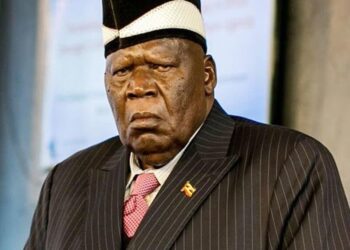April Fools’ Day, celebrated annually on April 1st, is a day synonymous with pranks, hoaxes, and practical jokes. However, behind the laughter and jest lies a rich tapestry of history, cultural influences, and psychological insights. In this comprehensive exploration, we will delve into the origins of April Fools’ Day, tracing its roots across centuries and continents, examining its evolution into a global phenomenon, and uncovering the enduring appeal that continues to captivate people worldwide.
The precise origins of April Fools’ Day are shrouded in the mists of time, with various theories and legends attempting to explain its inception. One prevailing theory traces its roots to the adoption of the Gregorian calendar in the late 16th century by many European countries, which moved New Year’s Day from April 1st to January 1st. However, not all regions swiftly adopted the new calendar, and those who continued to celebrate the new year on April 1st were mockingly dubbed “April fools.” This jesting tradition gradually evolved into a day of lighthearted pranks and practical jokes aimed at those who remained unaware of the calendar change.
Another theory suggests a connection to ancient Roman festivals, such as Hilaria, which were marked by revelry, masquerades, and general merriment. During these festivities, people engaged in playful deception and role reversals, foreshadowing the spirit of mischief that characterizes April Fools’ Day. Regardless of its precise origins, April Fools’ Day emerged as a cultural phenomenon, ingrained in the collective consciousness and embraced as an opportunity for playful trickery and good-natured humor.
While April Fools’ Day has deep roots in European history, its celebration has transcended geographical boundaries, evolving and adapting to diverse cultural contexts around the world. In France, April Fools’ Day is known as “Poisson d’Avril” (April Fish), with the tradition involving the surreptitious affixing of paper fish to the backs of unsuspecting individuals. This playful act harkens back to the tradition of gifting fish as a symbol of good luck and prosperity during the spring season. Similarly, in the United Kingdom and Commonwealth countries, April Fools’ Day is marked by the dissemination of elaborate hoaxes and fabricated news stories by media outlets, often with the goal of eliciting laughter and disbelief from the public. In India, April Fools’ Day coincides with the festival of Holi, a vibrant celebration characterized by colorful powders, water balloons, and playful pranks. The convergence of these two festivities amplifies the atmosphere of joy and camaraderie, fostering a sense of unity and shared laughter among participants. In Japan, April Fools’ Day has gained popularity in recent years, with companies and brands capitalizing on the occasion to unleash imaginative and often outlandish marketing campaigns. From bizarre product launches to fictitious collaborations, these creative endeavors capture the attention of consumers while showcasing the playful side of corporate culture.
The allure of April Fools’ Day extends beyond mere amusement, offering valuable insights into human psychology, social dynamics, and the power of humor in fostering connections and relieving tension. Psychologists suggest that engaging in playful pranks and practical jokes on April Fools’ Day serves as a form of social bonding, strengthening relationships and fostering a sense of camaraderie among participants. The shared experience of laughter and surprise creates a sense of unity and belonging, transcending cultural and linguistic barriers. Furthermore, the tradition of April Fools’ Day provides an outlet for creativity and self-expression, encouraging individuals to unleash their imagination and wit in devising elaborate pranks and hoaxes. This creative endeavor not only cultivates a sense of joy and amusement but also promotes cognitive flexibility and problem-solving skills. Moreover, April Fools’ Day serves as a reminder of the importance of skepticism and critical thinking in an age of misinformation and fake news. By encouraging individuals to approach information with a healthy dose of skepticism and scrutiny, April Fools’ Day underscores the need for vigilance and discernment in navigating the complexities of the modern world.
In Uganda, April Fools’ Day is celebrated with a unique blend of traditional customs and modern influences. While the day may not have deep historical roots in Ugandan culture, it has become increasingly popular, especially among the younger generation. Ugandans embrace the spirit of April Fools’ Day with enthusiasm, engaging in playful pranks and practical jokes with friends, family, and colleagues.
In urban areas, April Fools’ Day is often marked by light-hearted hoaxes and humorous antics, with individuals and media outlets alike seizing the opportunity to showcase their wit and creativity. Social media platforms buzz with laughter-inducing memes, fabricated stories, and elaborate schemes designed to trick and entertain.
In rural communities, April Fools’ Day may be celebrated in more modest ways, with simple pranks and jovial banter among neighbors and community members. Regardless of location or background, the spirit of camaraderie and laughter prevails, bringing people together in shared moments of joy and amusement.
In conclusion, April Fools’ Day is far more than a day of harmless pranks and practical jokes—it is a testament to the enduring power of humor, creativity, and human connection. From its enigmatic origins to its global evolution and cultural adaptation, April Fools’ Day continues to captivate and inspire people around the world, uniting them in laughter and camaraderie. As we embrace the spirit of mischief and merriment on April 1st, let us cherish the timeless tradition of April Fools’ Day and celebrate the joy of laughter and shared humanity.







Discussion about this post